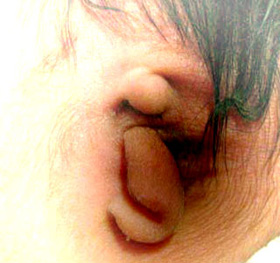
The disorder is different basically due to its skin anomalies which entails the neck and behind the ear portion. The other skin abnormalities are eye aberration, a typical facial look, and cleft lip and palate which occur frequently in this BOF syndrome.
By using most up-to-date molecular microarray technologies, BUSM found and examined it on one affected mother and son, two sporadic BOFS cases by the researchers. The results were that there was a small deletion on chromosome 6 in the mother and the son. After the genes were structured according to the candidate’s location, it was found that missense mutations clustered in the basic region of the DNA-binding domain of the TFAP2A gene in 4 sporadic BOFS patients.
“Genetics and genomics at BUSM, this discovery will lead to more precise diagnostic testing, enable prenatal diagnosis, suggest directions for new research, and facilitate genetic counseling in these familiesâ€, said lead author Jeff Milunsky, MD, director of clinical genetics, associate director of the Center for Human Genetics, and an associate professor of pediatrics.
Jeff Milunsky added, “This gene is a well-known transcription factor involved in multiple developmental pathways as well as tumorigenesis. An intriguing finding is that one of the affected patients with a mutation also has brain cancer, highlighting again the connection between malformations and cancer.â€
The widespread allusion may have significance as this gene would play a function in most common isolated occurrence of cleft lip and palate, believes Milunsky.
